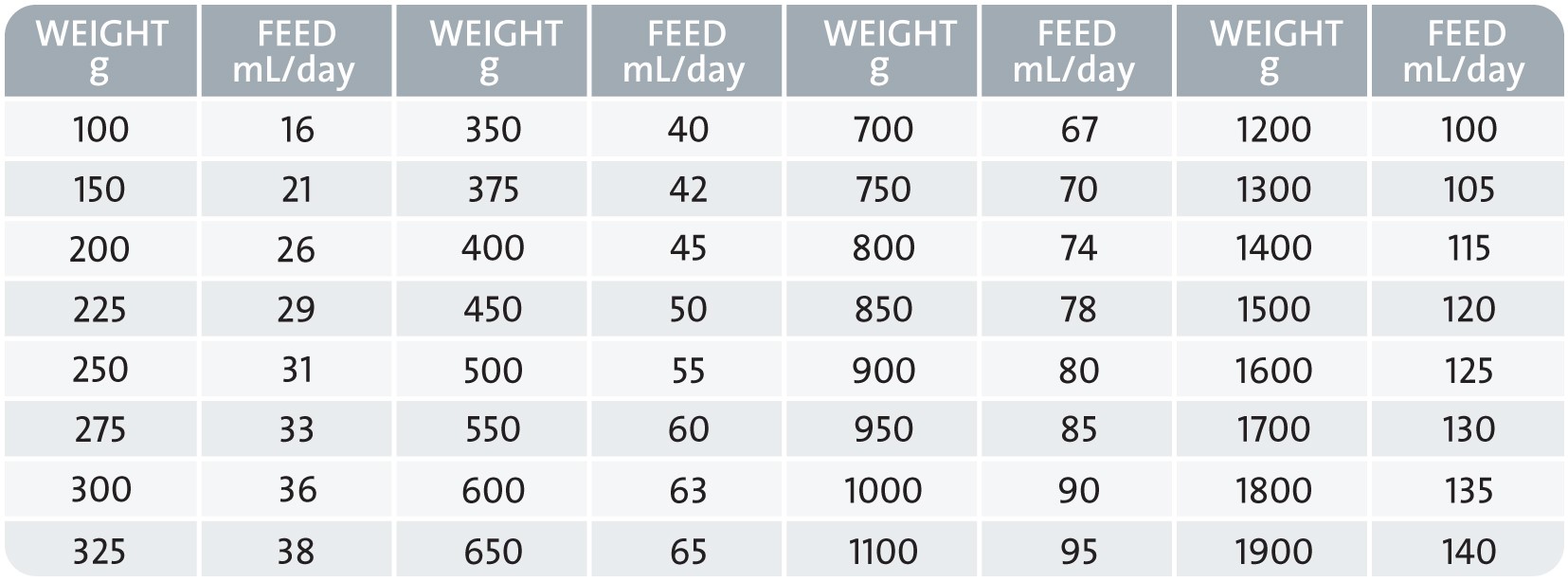Milk substitute for macropod (kangaroo & wallaby) joeys with between 60% – 70% of their pouch life completed.
Joeys at this stage have fur that begins as a fine velvet, but rapidly grows into a short, thicker coat. Eyes are fully opened and ears erect. Confined to the pouch, with head regularly out. Faeces mustard toothpaste to soft green pellet consistency.
Key Features
- Specifically formulated to match the composition of mid lactation kangaroo milk.
- High energy milk, with the required balance of carbohydrate & fat content.
- Protein high in sulphur-containing amino acids (cysteine & methionine) for rapid hair growth phase.
Ingredients
Whole milk solids (low lactose), whey protein, casein, glucose, vegetable oils, omega-3 & 6 fatty acids, maltodextrin, vitamins A, B1, B2, B3, B5, B6, B9, B12, C, D3, E, K, biotin, choline, calcium, phosphorus, potassium, sodium, magnesium, zinc, iron, manganese, copper, iodine, selenium.
Analysis
| Protein |
32% |
| Fat |
28% |
| Ash |
4% |
| Moisture |
3% |
| Energy (ME) |
21 MJ/kg |
Pack Sizes
220g, 1.1kg, 5kg & 10kg.
Use Kangaroo Milk Replacer 0.6 for finely-furred joeys during mid lactation, just prior to first pouch emergence.
Impact Colostrum Supplement may be fed to enhance the immune system.
Making up Milk
To make 100mL of milk: Mix 22g of powder (3 scoops) with 85ml of warm water.
To make 1 litre of milk: Mix 220g of powder with 850ml of warm water.
Add about half the water to the powder first and mix to a paste. Then make up with remaining water and mix thoroughly. Water is preboiled to ensure that it is sterilised. If the water is too hot it can cause the milk to curdle. If it is too cold then it will be difficult to disperse the powder. An electric whisk can be used for mixing larger quantities. Milk can be stored in the fridge for a day or can be frozen for up to 2 weeks. It may be useful to store frozen milk in small portions (e.g. ice cube trays), so that the required daily feed volumes can be easily thawed out. Once thawed out, discard any unused milk, and wash feeding utensils thoroughly.
Feeding Guide

Warm milk to about 30°C and feed using a bottle and teat. A Wombaroo MTM or STM Teat is recommended for in-pouch kangaroos and wallabies. Feed around 5 times per day for joeys with an Age Factor 0.6. If the joey is showing signs of dehydration (e.g. during hot weather), give extra drinks of water between feeds. Young joeys can dehydrate rapidly if not maintained under optimum husbandry conditions. Joeys at the 0.6 stage should be offered dirt to eat, which helps establish the correct gut flora for the consumption of herbage. Consult your veterinarian or experienced carer for further information about husbandry and feeding of joeys.
Growth
Different species of macropods grow at different rates. Refer to the Wombaroo growth charts for guidelines for various species of kangaroos and wallabies. Weigh joeys regularly to verify weight gains and determine the volume of milk to feed. Overfeeding milk can cause diarrhoea so feed the suggested volumes in our tables.
Transitioning from Kangaroo 0.6 to Kangaroo >0.7 formula
Milk transition refers to when a joey is changed from one Wombaroo milk stage to the next. It is important to transition joeys at the correct age to ensure they are getting the proper nutrition for their stage of development. Note that transition is dependent on joey age and not weight, as underweight joeys still need to be transitioned at the correct time. Fur appears last on the belly/chest of growing macropods. Once joeys have a complete covering of short fur they are ready to transition on to Kangaroo Milk Replacer >0.7 formula. Joeys are gradually transitioned over 10 days by mixing decreasing amounts of the 0.6 formula with increasing amounts of the >0.7 formula. This is outlined in the Wombaroo growth charts for various species.









